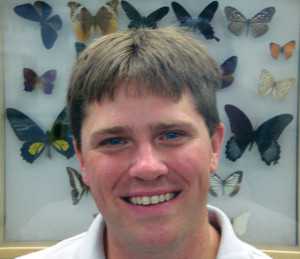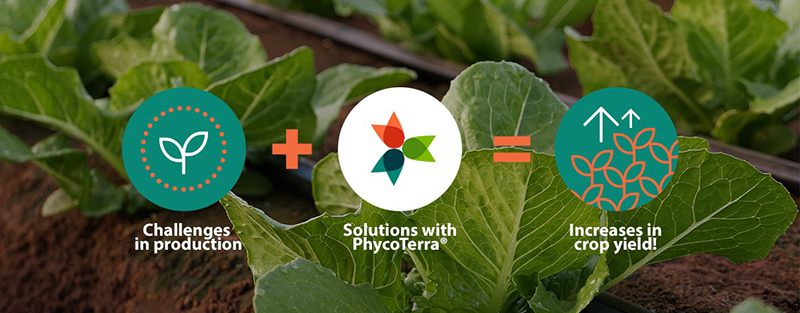GenNext Researchers Offer Solutions To Vegetable Growers’ Challenges
Over the course of the last several months, American Vegetable Grower has highlighted some of the next generation of growers that have big plans to lead vegetable farms in the future. We have identified them as GenNext Growers. (For more information about GenNext, go to www.GenNextGrowers.com.)
While the program is mostly focused on younger growers and the challenges impacting them as they strive to make improvements in vegetable production in the future, all aspects of the industry are important, and that includes the work being done by research and Extension personnel. As most already know, many researchers work hand-in-hand with growers, helping to find solutions to production challenges.
We asked six researchers from across the country, or what we are terming “GenNext Researchers,” about their relationships with growers and the work they are doing. One question, in particular — on the challenges facing growers — got a variety of answers and often was tied to the research they are conducting.
Here are their responses to the question: What are the most pressing challenges facing growers, and how are you helping them?
 Peter Dittmar
Peter Dittmar
Assistant professor, Horticulture Sciences Department, University of Florida, Institute of Food & Agricultural Sciences
The pressing challenges are methyl bromide alternatives and herbicide resistant weeds. Methyl bromide provided excellent control of weeds especially nutsedge. The answer for methyl bromide is the combination of multiple control practices: prevention such as cleaning equipment between fields, herbicides before and during the crop, fumigation before planting, and competitive cover crops. Conducting research on the correct combination is integral to my program.
The second challenge is herbicide resistant weeds. Fruit and vegetable crops have a minimal number of modes of action to rotate during a crop season. Education on rotating modes of action, including cultivation in an IPM program, and identifying an herbicide resistant population early is important.
 Amanda Gevens
Amanda Gevens
Assistant professor and Extension
Plant Pathologist, University of Wisconsin-Madison
One pressing challenge is the public and market pressure to demonstrate sustainability and environmental sensitivity in agricultural production. For many growers that are farming land that has been in their families for three-plus generations, they understandably scoff at the exercise.
However, the need to document and in many cases, certify their farm’s environmental and societal stewardship has come. Along with colleagues within the University of Wisconsin Extension system, we have provided support to growers in the development of assessment tools and sustainability metrics. Results of the tools can be tailored for market, public relations, or other end-purposes — and can offer powerful accounts of significant change in practice within agriculture.
I think in the past, there were generations of people brought up in and around agriculture. Currently, the production of food, feed, fiber, fuel, and ornamentals is so far removed from most people that it is a black hole, and the general public assumes the worst or is successfully informed by the uninformed.
It is no small task, and the job of growers, industry, and Extension is to provide the facts in the areas of biotechnology, pesticides, natural resource requirements, and monoculture. We need to teach not just “where” our food comes from, but “how” and “why.” I aim to be part of the solution in providing educational experiences where possible in my roles in outreach and academia.

Shimat V. Joseph
IPM Entomology Advisor, University of California
A couple of pressing challenges the vegetable growers are facing today (in the Salinas Valley) is how to deal with the cabbage maggot problem in cruciferous crop and symphylans in lettuce and celery. Historically, growers heavily relied upon use of organophosphate insecticides, such as chlorpyrifos, to manage cabbage maggot which eventually contaminated the environment (especially water systems).
My focus now is to determine the efficacy of alternate, low-risk insecticides to cabbage maggot and develop a program; to improve the insecticide use pattern such as timing, rate etc. to minimize the usage; and to explore possible non-chemical approaches in order to achieve the above objectives. I’m currently spending considerable time to learn the biology of cabbage maggot on brassicas in the Salinas Valley.
Symphylans, on the other hand, are very difficult to manage. Their cryptic nature, unpredictability, and lack of enough knowledge about their biology makes this pest very difficult to manage. They are sporadic and usually pop up in certain spots of the field causing crop damage.
Thrips are also causing sporadic damage on lettuce and celery. They not only cause direct feeding damage but also transmit viruses such as tomato spotted wilt virus and impatiens necrotic spotted virus on lettuce. As a result, I’m conducting research on thrips. Other economical pests include aphids (primarily lettuce aphid), leaf miners, etc.
 Ajay Nair
Ajay Nair
Assistant professor and Vegetable Extension Specialist, Department of Horticulture, Iowa State University
Developing vegetable production systems that utilize ecologically sound production practices such as cover cropping, organic amendments, and crop rotation is a goal growers want to achieve. Building such a system is not easy as there are challenges that need to be overcome, namely, weeds, insects, and diseases, depleting soils, and unfavorable climatic conditions.
Based on my interaction with growers during field days, workshops, and grower meetings, weed management is the number one problem. That is one of the reasons a number of my projects are focusing on using tools such as cover crops to sustainably manage weeds.
 Zsofia Szendrei
Zsofia Szendrei
Assistant professor, Department of Entomology, Michigan State University
Increasing the adoption of IPM is an issue that has been talked about since the 1970s but, in many cases, there is still much room for improvement. Giving growers effective tools to manage pests in a sustainable manner is the most important challenge.
In particular I hope to see the role of biological control increase in conventional pest management in the future, which, in many cases, will require growers to change their current practices.
I help growers by giving them information about pest and beneficial insect biology. I also help them implement new or existing insect management tools. For example, I help them with better timing of chemical applications, reducing the amount of insecticides applied, or adopting the use of newer, less environmentally harmful insecticides.
I also develop degree-day models to help understand and predict when a particular life stage of a pest is present and abundant; and I help them by coming up with better detection methods to see if a pest is present in a particular area.
 Ben Werling
Ben Werling
West Michigan Vegetable Educator, Michigan State University Extension
Two of the most pressing challenges are maintaining a consistent labor force and following food safety regulations. The majority of the vegetables grown by the farmers I serve are hand harvested. The lack of a consistent labor force, combined with inconsistently and unpredictably enforced labor regulations, is one of the main challenges facing our growers.
Food safety requirements also vary among the buyers that growers sell produce to. As a result, growers have to spend time and money preparing for multiple, often costly third-party food safety audits. The arrival of new FDA rules addressing food safety adds another layer of complexity. As an educator, I am working with other Extension agents to put on programs that explain labor and food safety issues and provide practical advice on how to navigate through them.










